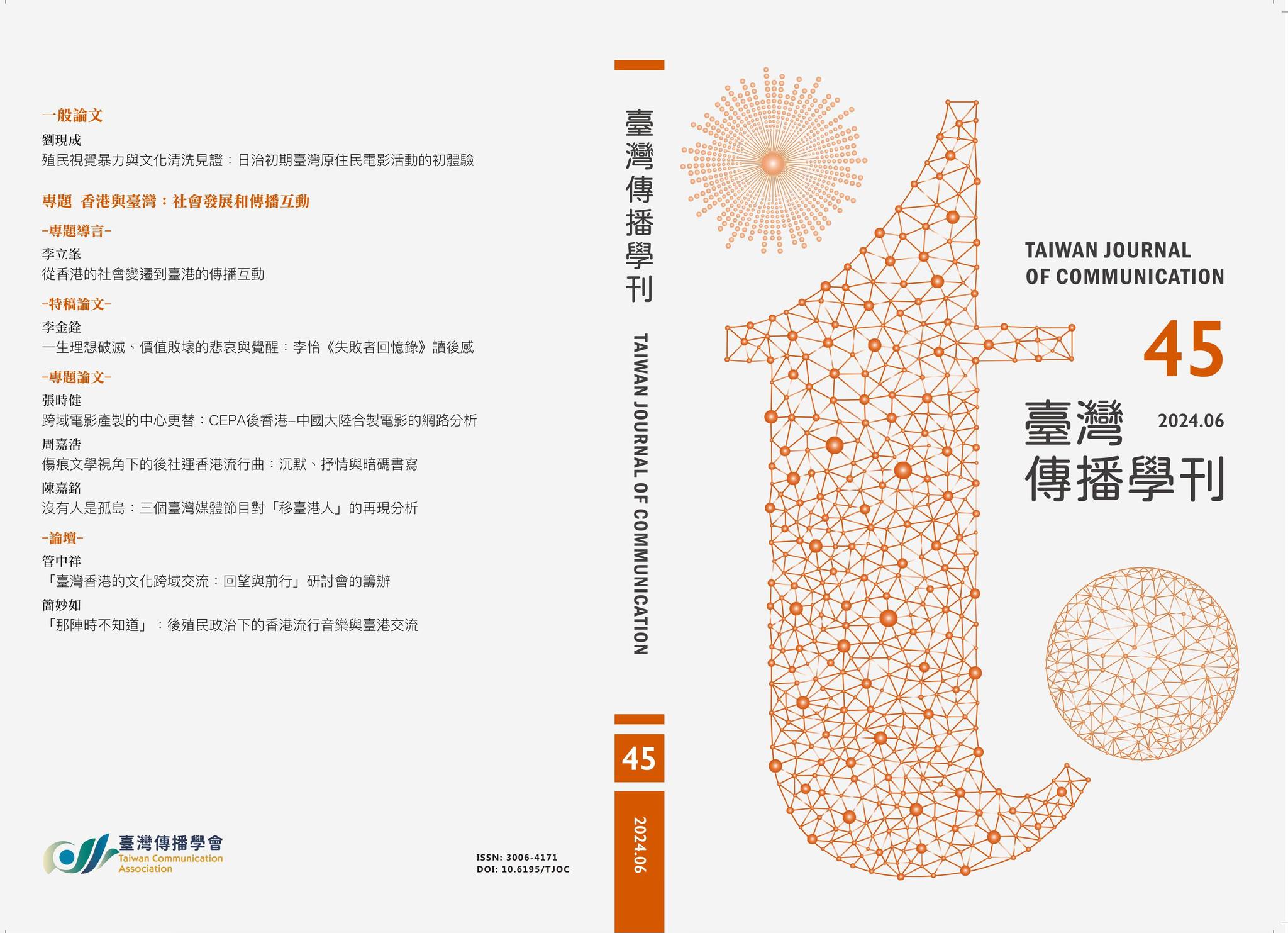 閱覽人數: 837
閱覽人數: 837
June
2024
No. 45
香港與臺灣:社會發展和傳播互動
Between Hong Kong and Taiwan: Social Development and Media Interactions頁數:61 - 107
作者(中)
張時健
作者(英)
Shih-Chien Chang
關鍵詞(中)
合製電影、社會網路分析、香港電影、國際分工、超國族電影
關鍵詞(英)
coproduction movie, social network analysis, Hong Kong cinema, international division of labour, transnational cinema
中文摘要
香港與中國大陸簽署《更緊密經貿安排(CEPA)》後,港陸合製電影已成香港電影業主流。本文採文化勞動跨國分工論,認為這可能促使香港在合製中擔當特定角色,朝跨域分工轉型。藉社會網路分析發現:香港電影工作者並未減少,且在創造性位置上有較佳表現,但影響力漸減;而中國大陸工作者影響力漸增,在行政統籌上表現較佳。合製的生產模式是由導演中心制向監製中心制轉向。結論指出合製網路的結構變遷,而中心移轉。
英文摘要
After the bilateral trade agreement Closer Economic Partnership Arrangement was signed, coproductions between the film industries in Hong Kong and mainland China have become mainstream. This has led to concerns about the future of Hong Kong’s film and its capability of engaging in international networking. This article applies the international division of cultural labor as a theoretical framework and uses social network analysis to investigate the functions performed by Hong Kong film workers. The article finds that (1) the proportion of Hong Kong film workers is not decreasing, (2) Hong Kong film workers excel at being creative but are losing influence, (3) mainland workers are gaining influence, particularly in administrative coordination, and (4) the producer-centered model is gaining prominence over the director-centered model. Accordingly, the article discusses the structural changes and movement of center occurring in the coproduction network where the coproductions could have little space for transnational expression.